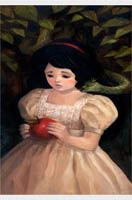ALMOND BLOSSOMS:
"Almond Blossoms," painted by Vincent van Gogh in 1890, is one of his most celebrated works, a vibrant and symbolic oil painting that marks a departure from his darker, more turbulent pieces. Created during the final months of his life while he was living in the south of France, "Almond Blossoms" reflects the artist's fascination with nature, particularly the beauty of renewal and growth. This painting is often considered a symbol of hope, as it portrays the blossoming of almond trees, a recurring theme in Van Gogh's work, but with a particular emphasis on the theme of new beginnings.

ALMOND BLOSSOMS
THE COMPOSITION AND SUBJECT MATTER:
"Almond Blossoms" features a branch of an almond tree in full bloom, against a bright, clear blue sky. The tree's delicate white and pink flowers are the focus of the composition, with branches stretching across the canvas, their petals contrasting beautifully with the bold blue background. The almond blossoms appear almost as though they are floating in mid-air, as the composition has no ground or other elements to anchor the viewer's perspective. This choice emphasizes the beauty and fragility of the flowers, creating a sense of lightness and airiness.
The almond tree was a particularly significant symbol for Van Gogh during this period. In his letters, he often referred to the symbolism of the blossoming almond tree as a representation of new life and spiritual renewal. The painting captures the exact moment of transformation—when the bare, dormant branches of winter bloom into delicate flowers, symbolizing hope, resurrection, and the perpetual cycle of life. The blossoming tree is a perfect metaphor for Van Gogh's own struggles, as it reflects his desire for personal rebirth and renewal, as well as his continued fascination with the themes of growth and nature.
ABOUT THE AUTHOR:
http://www.reviewpainting.com/Vincent-van-Gogh.htm






